-
 Over 1000 hints and recipes for making your own wine and beers - an enjoyable hobby you can share with friends and make great savings in costs, too. There's sections on country wines, fruit wines, sparkling wines, malt syrup beers, fruit beers, ciders, liqueurs and even flavoured vinegars for cooking. All the information is here - ingredients, equipment and step by step instructions.
Over 1000 hints and recipes for making your own wine and beers - an enjoyable hobby you can share with friends and make great savings in costs, too. There's sections on country wines, fruit wines, sparkling wines, malt syrup beers, fruit beers, ciders, liqueurs and even flavoured vinegars for cooking. All the information is here - ingredients, equipment and step by step instructions. -
 Well, perhaps not quite 1001 - but it certainly a fascinating, hand-picked cross-section of classic conversation from Andrew Denton's Enough Rope. Many feature previously unreleased material and are guaranteed to please and inspire; this is an eminently browsable and instantly addictive book. Among the guests are Cate Blanchett, Bono, Steve Irwin,Alan Bond, Elton John, Mel Brooks, Jane Goodall, Matt Lucas and David Williams, Tim Winton and Michael 'Parky' Parkinson. With black and white photographs.
Well, perhaps not quite 1001 - but it certainly a fascinating, hand-picked cross-section of classic conversation from Andrew Denton's Enough Rope. Many feature previously unreleased material and are guaranteed to please and inspire; this is an eminently browsable and instantly addictive book. Among the guests are Cate Blanchett, Bono, Steve Irwin,Alan Bond, Elton John, Mel Brooks, Jane Goodall, Matt Lucas and David Williams, Tim Winton and Michael 'Parky' Parkinson. With black and white photographs. -
 Never before had royal authority been so fundamentally challenged. Eight centuries later, 63 clauses of the original Magna Carta are still in use. But this is not a dry treatise of this well-covered historical event: it is also what it was like to live in that momentous year. Fashion, food, religion, sex, education and medicine...Spectacles were invented...windmills were erected...Oxford became the first university and the cathedrals of Lincoln and Salisbury were built. Full of rich detail, from great matters of state to everyday domestic life.
Never before had royal authority been so fundamentally challenged. Eight centuries later, 63 clauses of the original Magna Carta are still in use. But this is not a dry treatise of this well-covered historical event: it is also what it was like to live in that momentous year. Fashion, food, religion, sex, education and medicine...Spectacles were invented...windmills were erected...Oxford became the first university and the cathedrals of Lincoln and Salisbury were built. Full of rich detail, from great matters of state to everyday domestic life. -
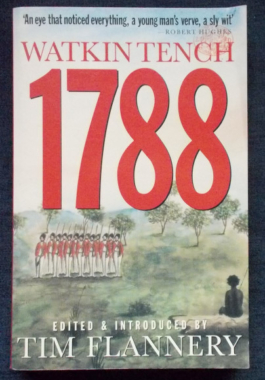
1788: Watkin Tench
$9.00Watkin Tench stepped ashore at Botany Bay with the First Fleet in January 1788. He was in his late twenties, a captain of the marines and on the adventure of his life. Insatiably curious with a natural genius for storytelling, Tench wrote two accounts of the infant colony: A Narrative Of The Expedition To Botany Bay and A Complete Account Of The Settlement At Port Jackson. He brings to life the legendary figures of Bennelong, Arabanoo and Governor Phillip and records the voices of the convicts as they make new lives in their new country. Edited and introduced by Tim Flannery. -
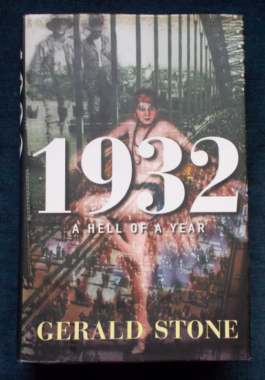 Scandals, disasters, shocks and crises: 1932 could truly be described as one of the most electrifying years in Australian history, alive with unforgettable characters and momentous events. So much happened in that fateful year, becoming the stuff of enduring national legend: the Sydney Harbour Bridge opened by surprise with the slashing sword of Captain Francis de Groot; the birth of the Australian Broadcasting Commission; the mysterious death of the beloved race horse Phar Lap; the controversial dismissal of NSW Premier Jack Lang; and the start of cricket's infamous Bodyline series. Ivy Field, in the most notorious divorce case of the decade, sued for today's equivalent of $350,00 in alimony to support her lifestyle of imported lace underwear and $5000 dresses. Overshadowing all else, the Great Depression seemed to single Australians out for special punishment, pushing a fragile young society to the brink of disintegration. By 1932 - the worst of it - a third of the population had been reduced to living like refugees in their own land while a lucky few emerged rich as third world rajahs. Dead men were walking - the tens of thousands of jobless tramp the bush roads, and among them, the prime suspect in a brutal murder. And 1932 was also a year that would see dauntless courage and endurance as ordinary Australians weathered a global catastrophe and become a critical turning point for a country balanced between its colonial past and its independent future. Illustrated with historical black and white photographs.
Scandals, disasters, shocks and crises: 1932 could truly be described as one of the most electrifying years in Australian history, alive with unforgettable characters and momentous events. So much happened in that fateful year, becoming the stuff of enduring national legend: the Sydney Harbour Bridge opened by surprise with the slashing sword of Captain Francis de Groot; the birth of the Australian Broadcasting Commission; the mysterious death of the beloved race horse Phar Lap; the controversial dismissal of NSW Premier Jack Lang; and the start of cricket's infamous Bodyline series. Ivy Field, in the most notorious divorce case of the decade, sued for today's equivalent of $350,00 in alimony to support her lifestyle of imported lace underwear and $5000 dresses. Overshadowing all else, the Great Depression seemed to single Australians out for special punishment, pushing a fragile young society to the brink of disintegration. By 1932 - the worst of it - a third of the population had been reduced to living like refugees in their own land while a lucky few emerged rich as third world rajahs. Dead men were walking - the tens of thousands of jobless tramp the bush roads, and among them, the prime suspect in a brutal murder. And 1932 was also a year that would see dauntless courage and endurance as ordinary Australians weathered a global catastrophe and become a critical turning point for a country balanced between its colonial past and its independent future. Illustrated with historical black and white photographs. -
A fabulous compilation of political cartoons from a variety of sources world wide. In this volume: Europe Before The Great War; The First World War; The Uneasy Peace; Depression And Disarmament; The Rise Of The Nazis. With a chapter on Background and guide to cartoon analysis.
-
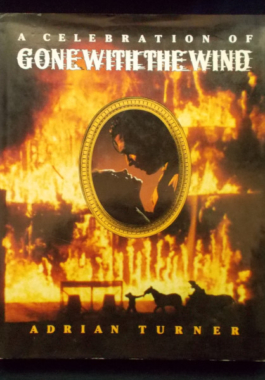 Gone With The Wind was the most commercially successful film ever made. Decades later, it still retains all the excitement, drama, glamour and romance that the world flocked to see in 1939 and 1940. This is a lavish behind the scenes look at how it was made - from David O. Selznick's inspired determination to bring it to life, the hiring and firing of script writers, directors and cameramen; the casting of Clark Gable as Rhett and the year long search for the perfect Scarlett...followed by the seemingly unending editing, the sneak previews, the sneers of Hollywood and finally, the triumphant Atlanta premiere attended by four Civil War veterans and ten Academy Awards. This is a unique pictorial record of a film that sums up the madness and the genius of the Hollywood system and a tribute to the men and women who all contributed to Gone With The Wind .
Gone With The Wind was the most commercially successful film ever made. Decades later, it still retains all the excitement, drama, glamour and romance that the world flocked to see in 1939 and 1940. This is a lavish behind the scenes look at how it was made - from David O. Selznick's inspired determination to bring it to life, the hiring and firing of script writers, directors and cameramen; the casting of Clark Gable as Rhett and the year long search for the perfect Scarlett...followed by the seemingly unending editing, the sneak previews, the sneers of Hollywood and finally, the triumphant Atlanta premiere attended by four Civil War veterans and ten Academy Awards. This is a unique pictorial record of a film that sums up the madness and the genius of the Hollywood system and a tribute to the men and women who all contributed to Gone With The Wind . -
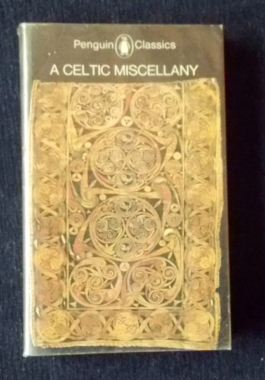 Including works from Welsh, Irish and Scottish Gaelic, Cornish, Breton and Manx, this Miscellany offers a rich blend of poetry and prose from the eighth to the nineteenth century and provides a unique insight into the minds and literature of the Celtic people. It is a literature dominated by a deep sense of wonder, wild inventiveness and a profound sense of the uncanny, in which the natural world and the power of the individual spirit are celebrated with astonishing imaginative force. Arranged by theme: from the hero-tales of Cú Chulainn, Bardic poetry and elegies to the sensitive and intimate writings of early Celtic Christianity.
Including works from Welsh, Irish and Scottish Gaelic, Cornish, Breton and Manx, this Miscellany offers a rich blend of poetry and prose from the eighth to the nineteenth century and provides a unique insight into the minds and literature of the Celtic people. It is a literature dominated by a deep sense of wonder, wild inventiveness and a profound sense of the uncanny, in which the natural world and the power of the individual spirit are celebrated with astonishing imaginative force. Arranged by theme: from the hero-tales of Cú Chulainn, Bardic poetry and elegies to the sensitive and intimate writings of early Celtic Christianity. -

The stories of five pioneer families of the central west of New South Wales. The Coates family of Bathurst and Kings Plains; The Luck family of Blayney; the Smith family of Gallymont; the Green family of Neville; and the Healey Family of Mandurama. Illustrated with archival black and white photographs.
-
 An unusual and enchanting album of all things cat and cats - cats with personalities, drawn, painted, sculpted or sewn by international artists; cats doing everything from sitting pretty to participating in circus acts; cats in history and worshipped cats...it's a light-hearted look at cats in life and art. Many beautiful illustrations.
An unusual and enchanting album of all things cat and cats - cats with personalities, drawn, painted, sculpted or sewn by international artists; cats doing everything from sitting pretty to participating in circus acts; cats in history and worshipped cats...it's a light-hearted look at cats in life and art. Many beautiful illustrations. -
 There are two kinds of cat owners: those who put the cat out at night and those who let the cat push them out of the warmest and most comfortable chair. John Merrett is one of the latter. Strangely, for a cat lover, he acquired only one cat deliberately - the rest of them staged a home invasion and captivated him. Five of these cats - William, Henry, Barney, Joe Bulldozer and Jimpsie McCowdrey - became radio personalities and William became a star on on the Woman's Hour Request Week. A book for sincere cat-worshippers with delightful photos.
There are two kinds of cat owners: those who put the cat out at night and those who let the cat push them out of the warmest and most comfortable chair. John Merrett is one of the latter. Strangely, for a cat lover, he acquired only one cat deliberately - the rest of them staged a home invasion and captivated him. Five of these cats - William, Henry, Barney, Joe Bulldozer and Jimpsie McCowdrey - became radio personalities and William became a star on on the Woman's Hour Request Week. A book for sincere cat-worshippers with delightful photos. -
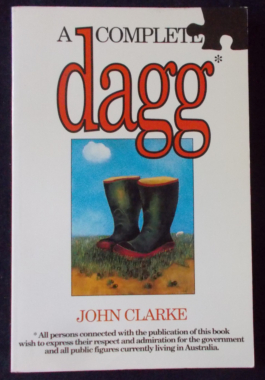 Complete dagg John 'Nobby' Clarke (1948-2017) claimed a PhD in Cattle and held important positions with Harrods, Selfridges and Easibind; was sacked by ABC Radio and worked for various defunct newspapers; he enjoyed such recreations as reading theological works and dog trials. His address was care of the people next door. (Or just pop it inside the door of fuse box for Friday collection.) He really was the complete dagg. Chapters include: Australia - A User's Guide; Celebrity Interviews - luminaries include the late Bob Hawke, Prince Charles and Meryl Streep; Farnarkeling; The Resolution of Conflict; Golf (extensively covered...) This Week On ABC Television; Australiaform; Australia And How To Repair It (with a section on Troubleshooting); Very Worrying Developments.
Complete dagg John 'Nobby' Clarke (1948-2017) claimed a PhD in Cattle and held important positions with Harrods, Selfridges and Easibind; was sacked by ABC Radio and worked for various defunct newspapers; he enjoyed such recreations as reading theological works and dog trials. His address was care of the people next door. (Or just pop it inside the door of fuse box for Friday collection.) He really was the complete dagg. Chapters include: Australia - A User's Guide; Celebrity Interviews - luminaries include the late Bob Hawke, Prince Charles and Meryl Streep; Farnarkeling; The Resolution of Conflict; Golf (extensively covered...) This Week On ABC Television; Australiaform; Australia And How To Repair It (with a section on Troubleshooting); Very Worrying Developments. -
 In the early morning hours of April 18, 1906, San Francisco and a string of towns to its north-northwest and the south-southeast were overcome by an enormous shaking that was compounded by the violent shocks of an earthquake, registering 8.25 on the Richter scale. The quake resulted from a rupture in the San Andreas fault, which lies underneath the earth's surface along the northern coast of California. Lasting little more than a minute, the earthquake wrecked 490 blocks, toppled a total of 25,000 buildings, broke open gas mains, cut off electric power lines throughout the Bay area, and effectively destroyed the gold rush capital that had stood there for a half century. Perhaps more significant than the tremors and rumbling, which affected a swatch of California more than 200 miles long, were the fires that took over the city for three days, leaving chaos and horror in its wake. The human tragedy included the deaths of upwards of 700 people, with more than 250,000 left homeless. It was perhaps the worst natural disaster in the history of the United States. The author also discusses the significance of the quake and the effect it had on the rest of twentieth-century California and American history. With black and white photographs.
In the early morning hours of April 18, 1906, San Francisco and a string of towns to its north-northwest and the south-southeast were overcome by an enormous shaking that was compounded by the violent shocks of an earthquake, registering 8.25 on the Richter scale. The quake resulted from a rupture in the San Andreas fault, which lies underneath the earth's surface along the northern coast of California. Lasting little more than a minute, the earthquake wrecked 490 blocks, toppled a total of 25,000 buildings, broke open gas mains, cut off electric power lines throughout the Bay area, and effectively destroyed the gold rush capital that had stood there for a half century. Perhaps more significant than the tremors and rumbling, which affected a swatch of California more than 200 miles long, were the fires that took over the city for three days, leaving chaos and horror in its wake. The human tragedy included the deaths of upwards of 700 people, with more than 250,000 left homeless. It was perhaps the worst natural disaster in the history of the United States. The author also discusses the significance of the quake and the effect it had on the rest of twentieth-century California and American history. With black and white photographs. -
 Newspaper editor Jill Baker arrived home to find her husband dead on the bedroom floor. Within weeks, still in shock, she was diagnosed with breast cancer and told her chances of surviving. Surgery, chemotherapy and radiation treatment followed in a year from hell. At her lowest ebb, Jill took a chance. She needed someone who cuddled her at night and was still excited to see her in the morning. She just hadn't met him yet. She needed something or somebody to make life worth living again. But could it really be a crazy, howling, snoring, digging, chewing, barking orange pup called Dirty Harry? Turns out that Harry and Jill were made for each other. They are an unlikely duo; Jill is quiet, Harry is loud as hell. Jill meticulously plans the day while Harry wings it. She sips Pinot while he's an espresso martini guy. Theirs is a beautiful friendship, an unbreakable bond.
Newspaper editor Jill Baker arrived home to find her husband dead on the bedroom floor. Within weeks, still in shock, she was diagnosed with breast cancer and told her chances of surviving. Surgery, chemotherapy and radiation treatment followed in a year from hell. At her lowest ebb, Jill took a chance. She needed someone who cuddled her at night and was still excited to see her in the morning. She just hadn't met him yet. She needed something or somebody to make life worth living again. But could it really be a crazy, howling, snoring, digging, chewing, barking orange pup called Dirty Harry? Turns out that Harry and Jill were made for each other. They are an unlikely duo; Jill is quiet, Harry is loud as hell. Jill meticulously plans the day while Harry wings it. She sips Pinot while he's an espresso martini guy. Theirs is a beautiful friendship, an unbreakable bond. -
 A unique study of Vietnam from prehistory to 1972 which places the Vietnam War and Western involvement in perspective. Geography and environment have had a profound effect on Vietnamese history - the Vietnamese have had to contend with the power of neighboring China, a coastline that facilitated French conquest and mountains that divide the Red River delta in the north from the Mekong River valley in the south. Also covered is the legendary origin of the Vietnamese and their emergence before the advent of Chinese influence in the 1st century B.C.; the forces that shaped the centralised Vietnamese state during the era of independence after the expulsion of the Chinese in A.D. 939; and the century of French exploitation, during which nationalist movements arose in the north and south.
A unique study of Vietnam from prehistory to 1972 which places the Vietnam War and Western involvement in perspective. Geography and environment have had a profound effect on Vietnamese history - the Vietnamese have had to contend with the power of neighboring China, a coastline that facilitated French conquest and mountains that divide the Red River delta in the north from the Mekong River valley in the south. Also covered is the legendary origin of the Vietnamese and their emergence before the advent of Chinese influence in the 1st century B.C.; the forces that shaped the centralised Vietnamese state during the era of independence after the expulsion of the Chinese in A.D. 939; and the century of French exploitation, during which nationalist movements arose in the north and south. -
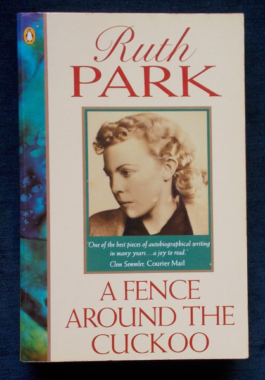 This first volume of Ruth Park’s autobiography is an account of her isolated childhood in the rainforests of New Zealand, her convent education which encouraged her love of words and writing and the bitter years of the Depression. She then entered the rough-and-tumble world of journalism and began a reluctant correspondence with a young Australian writer. In 1942, she moved to Sydney and married that writer, D’Arcy Niland. There she would write The Harp In The South, the first of her classic Australian novels. A Fence Around the Cuckoo is the story of one of Australia’s best storytellers and how she learnt her craft. Illustrated with black and white photographs. https://cosmiccauldronbooks.com.au/p/fishing-in-the-styx-ruth-park/
This first volume of Ruth Park’s autobiography is an account of her isolated childhood in the rainforests of New Zealand, her convent education which encouraged her love of words and writing and the bitter years of the Depression. She then entered the rough-and-tumble world of journalism and began a reluctant correspondence with a young Australian writer. In 1942, she moved to Sydney and married that writer, D’Arcy Niland. There she would write The Harp In The South, the first of her classic Australian novels. A Fence Around the Cuckoo is the story of one of Australia’s best storytellers and how she learnt her craft. Illustrated with black and white photographs. https://cosmiccauldronbooks.com.au/p/fishing-in-the-styx-ruth-park/ -
 The author, director of the Mood Disorders Program at Tufts University Medical Center, draws from the careers and personal plights of such notable leaders as Lincoln, Churchill, Gandhi, Martin Luther King, Jr., JFK, and others from the past two centuries to build an argument that the very qualities that mark those with mood disorders - realism, empathy, resilience, and creativity - also make for the best leaders in times of crisis. By combining analysis of the historical evidence with the latest psychiatric research, Ghaemi demonstrates how he thinks these qualities have produced brilliant leadership under the toughest circumstances.individuals and society at large-however high the price for those who endure these illnesses.
The author, director of the Mood Disorders Program at Tufts University Medical Center, draws from the careers and personal plights of such notable leaders as Lincoln, Churchill, Gandhi, Martin Luther King, Jr., JFK, and others from the past two centuries to build an argument that the very qualities that mark those with mood disorders - realism, empathy, resilience, and creativity - also make for the best leaders in times of crisis. By combining analysis of the historical evidence with the latest psychiatric research, Ghaemi demonstrates how he thinks these qualities have produced brilliant leadership under the toughest circumstances.individuals and society at large-however high the price for those who endure these illnesses. -
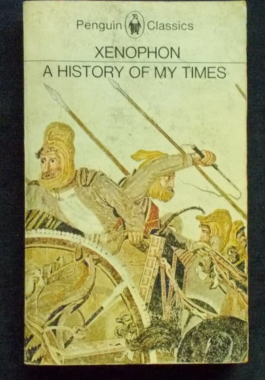
In 404 B.C., the Spartans demolished the famous Long Walls of Athens, signalling the complete victory of the city of Lycurgus and the subordination of all Greece to the Spartan interest. Yet within forty years, the pride of Sparta had been humbled, their glory gone for ever. Xenophon lived through this time; despite being Athenian he was intimate with some of the most influential people in Sparta, including King Agesilaus. Here is the on-the-spot documentation of the last years of the independent cities of Hellas, by someone who saw it all. Translated by Rex Warner. https://cosmiccauldronbooks.com.au/p/imperial-caesar-rex-warner/
-
 The fascinating and true story of a 20th century bush legend. Known only from fleeting glimpses to the people of South Australia's Riverland region who gave him his name, the Possum deliberately turned his back on society to live almost entirely off the land as a recluse on the banks of the Murray River. It took Max Jones, country detective, almost thirty years to solve the mystery behind the man called Possum. From chance encounters, brief meetings and full scale conversations with the man himself - and from the testimony of others - the author pieced together Possum's extraordinary life story. Illustrated with photographs, sketches, newspaper articles and entries from the Possum's own diary.
The fascinating and true story of a 20th century bush legend. Known only from fleeting glimpses to the people of South Australia's Riverland region who gave him his name, the Possum deliberately turned his back on society to live almost entirely off the land as a recluse on the banks of the Murray River. It took Max Jones, country detective, almost thirty years to solve the mystery behind the man called Possum. From chance encounters, brief meetings and full scale conversations with the man himself - and from the testimony of others - the author pieced together Possum's extraordinary life story. Illustrated with photographs, sketches, newspaper articles and entries from the Possum's own diary. -
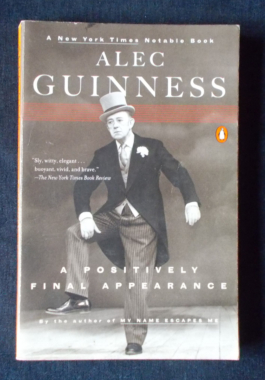 Sir Alec Guinness (1914 - 2000) makes his observations on Britain, taken from his journal at the tumultuous times of Princess Diana's death, the election of Tony Blair and comments on his quintessentially English country life with Mrs Guinness. A follow up to My Name Escapes Me, this volume covers 1996 - 1998. Sir Alec offers frank and surprising reflections on appearing in Star Wars and hilarious reminiscences of Humphrey Bogart and Noel Coward.
Sir Alec Guinness (1914 - 2000) makes his observations on Britain, taken from his journal at the tumultuous times of Princess Diana's death, the election of Tony Blair and comments on his quintessentially English country life with Mrs Guinness. A follow up to My Name Escapes Me, this volume covers 1996 - 1998. Sir Alec offers frank and surprising reflections on appearing in Star Wars and hilarious reminiscences of Humphrey Bogart and Noel Coward. -
 Wells intended this volume to be straightforwardly, almost as a novel is read. It gives, in a most general way, an account of our present knowledge of history, shorn of elaborations and complications. Its special end is to meet the needs of the busy general reader who 'wishes to repair his faded or fragmentary conception of the great adventure of Mankind.' This edition was revised from the 1922 edition and prepared b y Professor G.P. Wells (H.G. Wells' son) and Raymond Postgate. Five new chapters have been added and the original maps are redrawn, with two new maps added. Cover: Detail from Prismes électriques by Sonia Delaunay.
Wells intended this volume to be straightforwardly, almost as a novel is read. It gives, in a most general way, an account of our present knowledge of history, shorn of elaborations and complications. Its special end is to meet the needs of the busy general reader who 'wishes to repair his faded or fragmentary conception of the great adventure of Mankind.' This edition was revised from the 1922 edition and prepared b y Professor G.P. Wells (H.G. Wells' son) and Raymond Postgate. Five new chapters have been added and the original maps are redrawn, with two new maps added. Cover: Detail from Prismes électriques by Sonia Delaunay. -
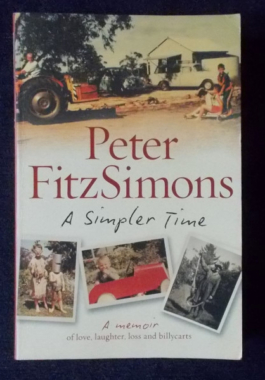
Peter Fitzsimon's account of growing up on the rural outskirts of Sydney in the 1960s is first and foremost a tribute to family. It's also a salute to times and generations past, when praise was understated and love unstinting; work was hard and values were clear; when people stood by each other in adversity. Days were for doing. Here is a childhood full of mischief, camaraderie, eccentric characters, drama, love, loss and billy-carts.
-
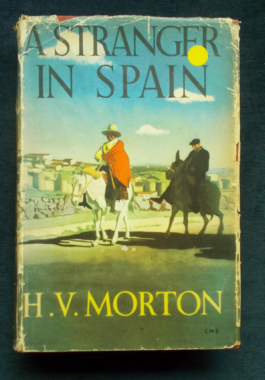 First published in 1954. With his trademark wit and inquisitive eye, H. V. Morton travels through a Spain unspoilt by tourism. Interspersed with episodes from Spain's rich history, this is a journey of discovery that would appeal to those with a sense of adventure and who appreciate a striking introduction to Spanish history and culture. "The stranger who wishes to approach Spain with sympathy and appreciation," H. V. Morton wrote, "must do so through its history." He takes the reader on a leisurely tour through a country where the past is very much alive, revealing a rich tapestry of events related with humor, charm, and sincerity. The Spain of the Christian kings and the caliphs of Córdoba, of Philip II, and the tragic Hapsburgs, the Spain of Columbus, of St Teresa, of Cortés and Pizarro, Velázquez, and Goya, is the thread of Morton's narrative. With colour and black and white illustrations.
First published in 1954. With his trademark wit and inquisitive eye, H. V. Morton travels through a Spain unspoilt by tourism. Interspersed with episodes from Spain's rich history, this is a journey of discovery that would appeal to those with a sense of adventure and who appreciate a striking introduction to Spanish history and culture. "The stranger who wishes to approach Spain with sympathy and appreciation," H. V. Morton wrote, "must do so through its history." He takes the reader on a leisurely tour through a country where the past is very much alive, revealing a rich tapestry of events related with humor, charm, and sincerity. The Spain of the Christian kings and the caliphs of Córdoba, of Philip II, and the tragic Hapsburgs, the Spain of Columbus, of St Teresa, of Cortés and Pizarro, Velázquez, and Goya, is the thread of Morton's narrative. With colour and black and white illustrations. -
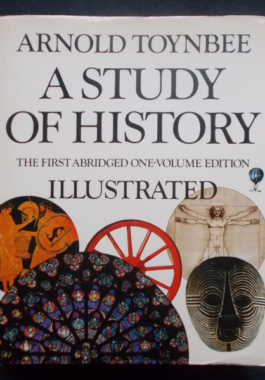 Originally published in twelve volumes, this edition revised by the author and Jane Caplan is the essence of that original work. It is also a redrafted, revised and updated version. Chapters: The Shape Of History; The Geneses Of Civilisations; The Growth Of Civilisations; The Breakdown Of Civilisations; The Disintegrations Of Civilsations; Universal States; Universal Churches; Heroic Ages; Contacts Between Civilisations In Space; Contacts Between Civilisations In Time; Why Study History? With over 500 illustrations.
Originally published in twelve volumes, this edition revised by the author and Jane Caplan is the essence of that original work. It is also a redrafted, revised and updated version. Chapters: The Shape Of History; The Geneses Of Civilisations; The Growth Of Civilisations; The Breakdown Of Civilisations; The Disintegrations Of Civilsations; Universal States; Universal Churches; Heroic Ages; Contacts Between Civilisations In Space; Contacts Between Civilisations In Time; Why Study History? With over 500 illustrations. -
 Dickens' Mr Micawber solved his problems by emigrating to Australia; his example was followed by Dickens' own sons. Alfred arrived in 1865 and younger brother Edward three years later. They both became managers and part-owners of stations in the far west of New South Wales, and stock and station agents. Alfred moved to Victoria and lectured both in Australia and overseas. Edward went to live in Wilcannia which he represented in Parliament. They may not have won fame or fortune, but their story, partly told through family letters, is still absorbing and would be of interest to any fan of Dickens.
Dickens' Mr Micawber solved his problems by emigrating to Australia; his example was followed by Dickens' own sons. Alfred arrived in 1865 and younger brother Edward three years later. They both became managers and part-owners of stations in the far west of New South Wales, and stock and station agents. Alfred moved to Victoria and lectured both in Australia and overseas. Edward went to live in Wilcannia which he represented in Parliament. They may not have won fame or fortune, but their story, partly told through family letters, is still absorbing and would be of interest to any fan of Dickens. -
 Like a tramp, a pilgrim or a wandering scholar, an 18 year-old boy set out one wet December day in 1933 to walk to Constantinople. In that year, when Hitler came to power, adventure beckoned and youth was golden for Patrick Leigh Fermor as he tramped up the Rhine and down the Danube towards the mysterious gateway to the East - sleeping barns, or in fairy tale castles, losing his possessions and being showered with gifts. But there was more to discover than freedom and the camaraderie of the road: the arts, landscapes, religions, languages, histories and above all, the people of a dozen civilisations unfolded before his hungry young mind - sharply outlined before the gathering storm. This volume covers his journey from the Hook of Holland to the Middle Danube.
Like a tramp, a pilgrim or a wandering scholar, an 18 year-old boy set out one wet December day in 1933 to walk to Constantinople. In that year, when Hitler came to power, adventure beckoned and youth was golden for Patrick Leigh Fermor as he tramped up the Rhine and down the Danube towards the mysterious gateway to the East - sleeping barns, or in fairy tale castles, losing his possessions and being showered with gifts. But there was more to discover than freedom and the camaraderie of the road: the arts, landscapes, religions, languages, histories and above all, the people of a dozen civilisations unfolded before his hungry young mind - sharply outlined before the gathering storm. This volume covers his journey from the Hook of Holland to the Middle Danube. -
 Shot down in 1942, young Australian fighter pilot John Williams DFC became a POW in the notorious Stalag Luft III camp in Germany. John had joined the air force shortly before the outbreak of war and, in the larrikin tradition, led his squadron into air combat over the deserts of Libya and Egypt dressed in sandals and shorts. John and his best mate Rusty Kierath were among the 76 POWs who tunnelled their way out of the supposedly escape-proof camp under the noses of their German guards in what later became the Hollywood blockbuster, The Great Escape. Their families never learned what really happened once the pair made it out into the forest. John's niece Louise Williams has pieced together his life, from his upbringing in a tight-knit family hit hard by the Depression, to his exploits in the air, and the many missing details of the tragic escape. It is a powerful and intimate story of one of the most dramatic episodes of World War II. Illustrated with black and white photographs.
Shot down in 1942, young Australian fighter pilot John Williams DFC became a POW in the notorious Stalag Luft III camp in Germany. John had joined the air force shortly before the outbreak of war and, in the larrikin tradition, led his squadron into air combat over the deserts of Libya and Egypt dressed in sandals and shorts. John and his best mate Rusty Kierath were among the 76 POWs who tunnelled their way out of the supposedly escape-proof camp under the noses of their German guards in what later became the Hollywood blockbuster, The Great Escape. Their families never learned what really happened once the pair made it out into the forest. John's niece Louise Williams has pieced together his life, from his upbringing in a tight-knit family hit hard by the Depression, to his exploits in the air, and the many missing details of the tragic escape. It is a powerful and intimate story of one of the most dramatic episodes of World War II. Illustrated with black and white photographs.


